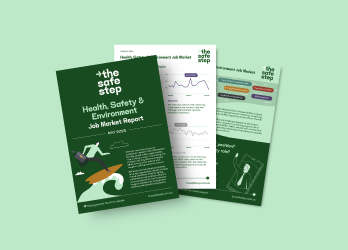The Neuroscience Advantage for Leaders
Page Published Date:
September 23, 2025
Are you struggling to build team cultures that perform and endure? The answer might be hiding in your brain chemistry. This connection was explored at our recent WA HSE Leadership Forum in Perth, where senior leaders examined how neuroscience is reshaping modern approaches to leadership. The discussions revealed how understanding brain chemistry can transform team performance, resilience, and trust in ways that deliver measurable results and in turn create improved safety outcomes.

Why your brain holds the key to leadership
Traditional leadership models often focus on systems, processes, and performance metrics. But the most successful leaders understand something deeper - human behaviour is driven by brain chemistry, not just policy.
When you are under pressure, your brain releases cortisol, reducing access to the prefrontal cortex where critical thinking happens. This means your decision-making, emotional regulation, and leadership presence all suffer when you need them most. In high-stakes environments, whether leading safety-critical operations or strategic business initiatives, this neurochemical reality can make or break outcomes.
The good news? You can learn to regulate your brain chemistry consciously and work with your team to improve theirs. Simple techniques like deep breathing exercises, maintaining good posture, and taking brisk walks can reset cortisol levels within minutes. Implementing quick reset moments during high-stress situations allows you to lead with greater clarity and composure - and your team will notice.
The four chemicals driving your team’s performance
Your team’s effectiveness isn’t just about training and processes. It’s fundamentally shaped by four key neurochemicals: cortisol, dopamine, serotonin, and oxytocin.
- Cortisol is your stress hormone. When elevated, it creates the fight-flight-freeze response you see in team members who become defensive, withdrawn or aggressive during safety discussions. High cortisol manifests as tunnel vision, muscle tension and difficulty concentrating – exactly the states that lead to safety incidents.
- Dopamine drives focus and motivation. Team members with healthy dopamine levels are productive, determined and "on a mission". Low dopamine shows up as boredom, laziness and that dangerous "can't be bothered" attitude towards safety protocols.
- Serotonin governs confidence and leadership capability. High serotonin team members feel stable, capable and strong – they're the ones who speak up about hazards. Low serotonin creates anxiety and that shaky feeling that stops people from raising safety concerns.
- Oxytocin builds trust and belonging. Teams with high oxytocin have strong morale and genuine care for each other's wellbeing. This is the foundation of psychological safety that makes people comfortable reporting near-misses and challenging unsafe practices.
Your practical brain chemistry toolkit
You can actively influence your team’s neurochemistry through small, evidence-based practices - and by looking after your own habits too.
Reduce cortisol
- As a leader: Introduce short breathing or mindfulness pauses before meetings. Frame feedback with empathy, not blame. Create opportunities for recovery through short breaks and time outdoors.
- Personally: Stay hydrated, seek social connection over coffee or lunch (bonus points if it’s with someone who makes you laugh), and don’t underestimate the power of smiling to lower stress.
Boost dopamine
- As a leader: Provide clear expectations and visible progress indicators. Encourage movement and adequate rest. Celebrate milestones and recognise achievements often.
- Personally: Listen to upbeat music during breaks or while commuting, eat a balanced diet, get morning or midday sunshine, and commit to learning new skills - even something fun like an Italian class for your next European getaway.
Increase serotonin
- As a leader: Foster solution-focused discussions, encourage good posture, and maximise natural light in your workplace.
- Personally: Reflect on past achievements, maintain consistent sleep and wake times, and practice kindness through small acts of support for others.
Enhance oxytocin
- As a leader: Build trust with consistent eye contact, authentic communication, and small rituals of connection. Encourage team members to support one another and use shared practices or traditions to strengthen bonds.
- Personally: Smile more often, enjoy appropriate touch (hugging friends, cuddling kids or pets), and engage in mentoring or coaching in business, sports, or creative environments.
As research from Harvard Business School highlights: "Psychological safety is not about being nice or lowering performance standards. It’s about creating an environment where people feel safe to speak up with questions, concerns, mistakes, and ideas."
The leadership imperative
Understanding brain chemistry isn’t just about being a “better leader” - it’s becoming essential in a world where wellbeing, psychological safety, and performance are increasingly intertwined. Emotional contagion through mirror neurons means your stress as a leader can literally transfer to your team, shaping their engagement and resilience.
Operating from a high-cortisol state doesn’t just affect you - it sets the tone for your entire group, creating anxiety, hesitation, or fear. Leaders who consciously manage their state create teams that are calmer, more confident, and more capable of delivering results.
Your next step towards neurochemical mastery
The future of leadership is about more than meeting targets - it’s about building environments where people thrive and perform at their best because their brains feel supported and engaged.
The intersection of neuroscience and leadership offers exciting opportunities to create more effective, sustainable, and resilient teams. These insights provide a starting point for exploring how brain chemistry could enhance your leadership approach. Consider how these principles might strengthen performance, trust, and engagement in your unique workplace context.
Other articles you might be interested in




